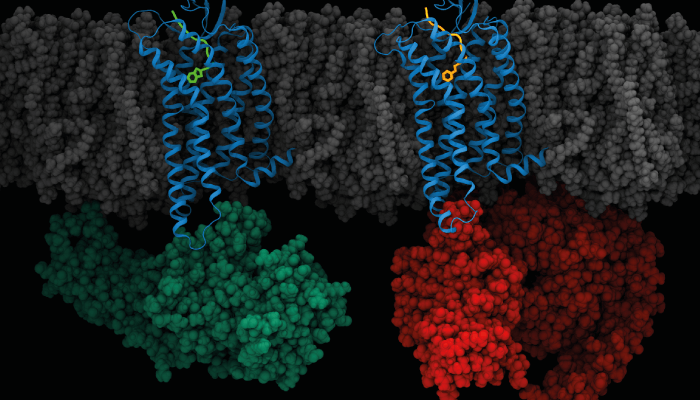Using simulations, researchers believe they can reduce the side effects of G protein-coupled receptor-targeting (GPCR-targeting) drugs (1). The aim is to design new drugs that alter the shape of these receptors in ways that activate beneficial signaling pathways but inhibit harmful signaling pathways.
“GPCRs represent the largest class of drug targets. In a phenomenon known as biased signaling, different drug molecules that bind to the same GPCR trigger distinct intracellular signaling pathways,” says Carl-Mikael Suomivuori, a postdoctoral research fellow at Stanford University. “A drug can, therefore, bind to a GPCR and activate signaling pathways with beneficial effects for the patient while avoiding pathways that cause harmful side effects.”
Investigating how this dual action could be exploited, Suomivuori and his colleagues ran molecular simulations of the angiotensin II type 1 receptor, a typical GPCR and a cardiovascular drug target. Their simulations revealed that, when bound to different drug molecules, the receptor adopted distinct conformations that made it more likely to interact with certain intracellular signaling proteins over others.

“Based on our simulations, we designed new drug molecules while predicting which signaling pathways they would activate. Testing these molecules in living cells confirmed that they worked,” says Suomivuori. “We were able to design a molecule that, when bound to this receptor, not only inhibits harmful signaling that raises blood pressure, but also activates beneficial signaling that can improve heart ability to contract. Molecules of this kind promise to be safer and more effective cardiovascular drugs.”
Though the team’s research focused on GPCR-targeting drugs, they believe that their general approach of using simulations to come up with mechanistic hypotheses could be applied to other drug targets – allowing improved properties in a broad range of medicines.
References
- CM Suomivuori, “Molecular mechanism of biased signaling in a prototypical G protein–coupled receptor,” Science, 367, 881, (2020).




